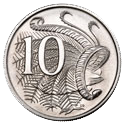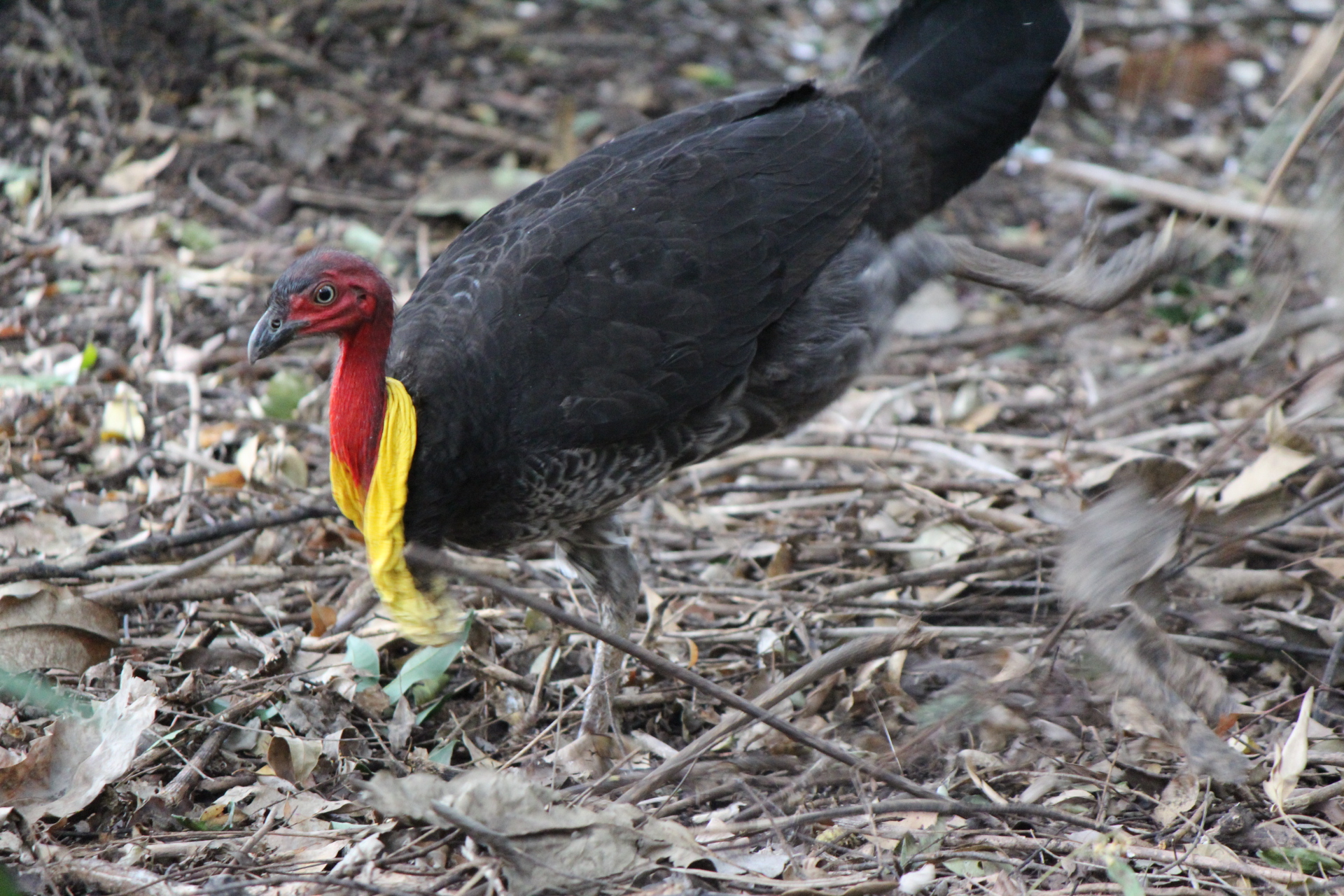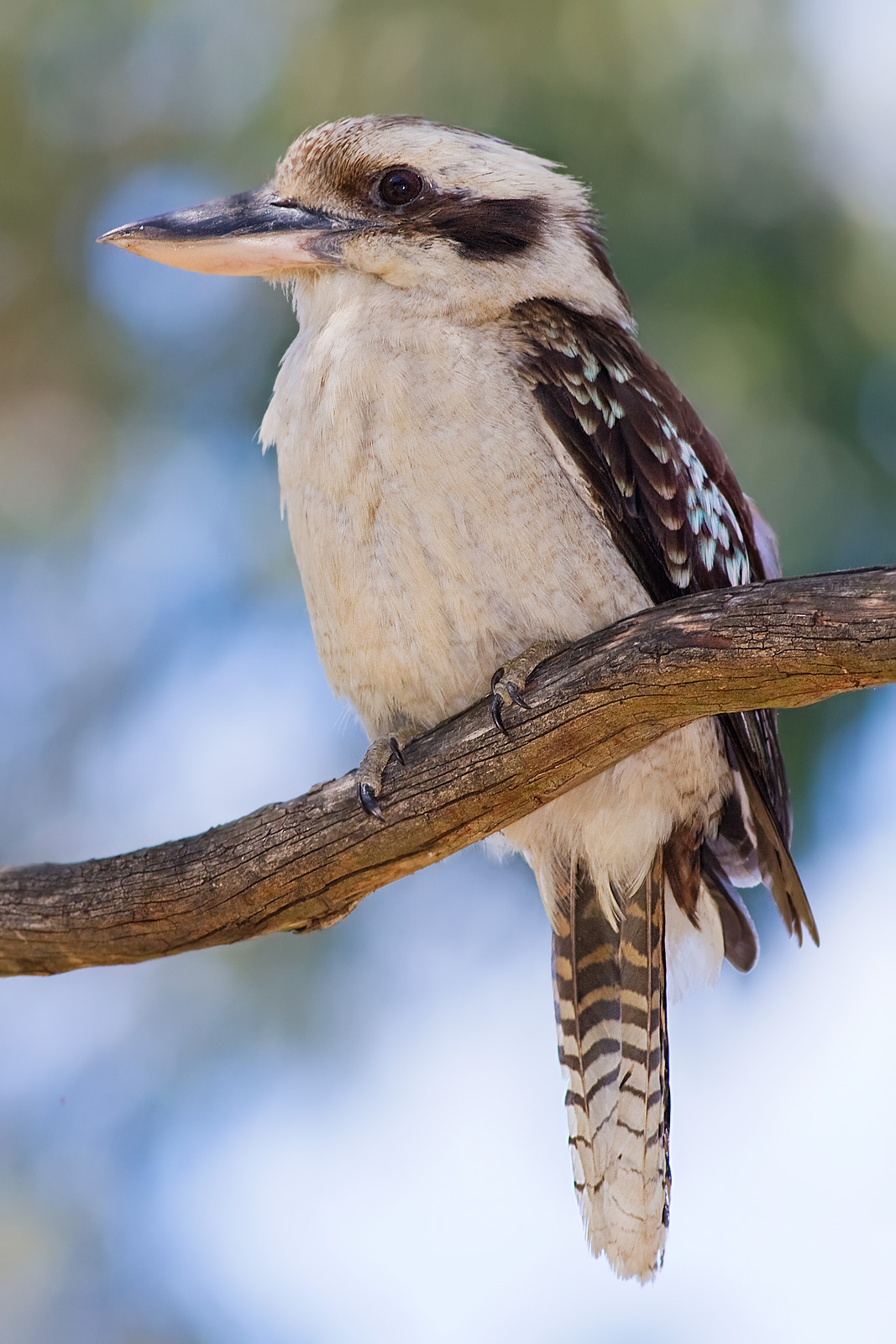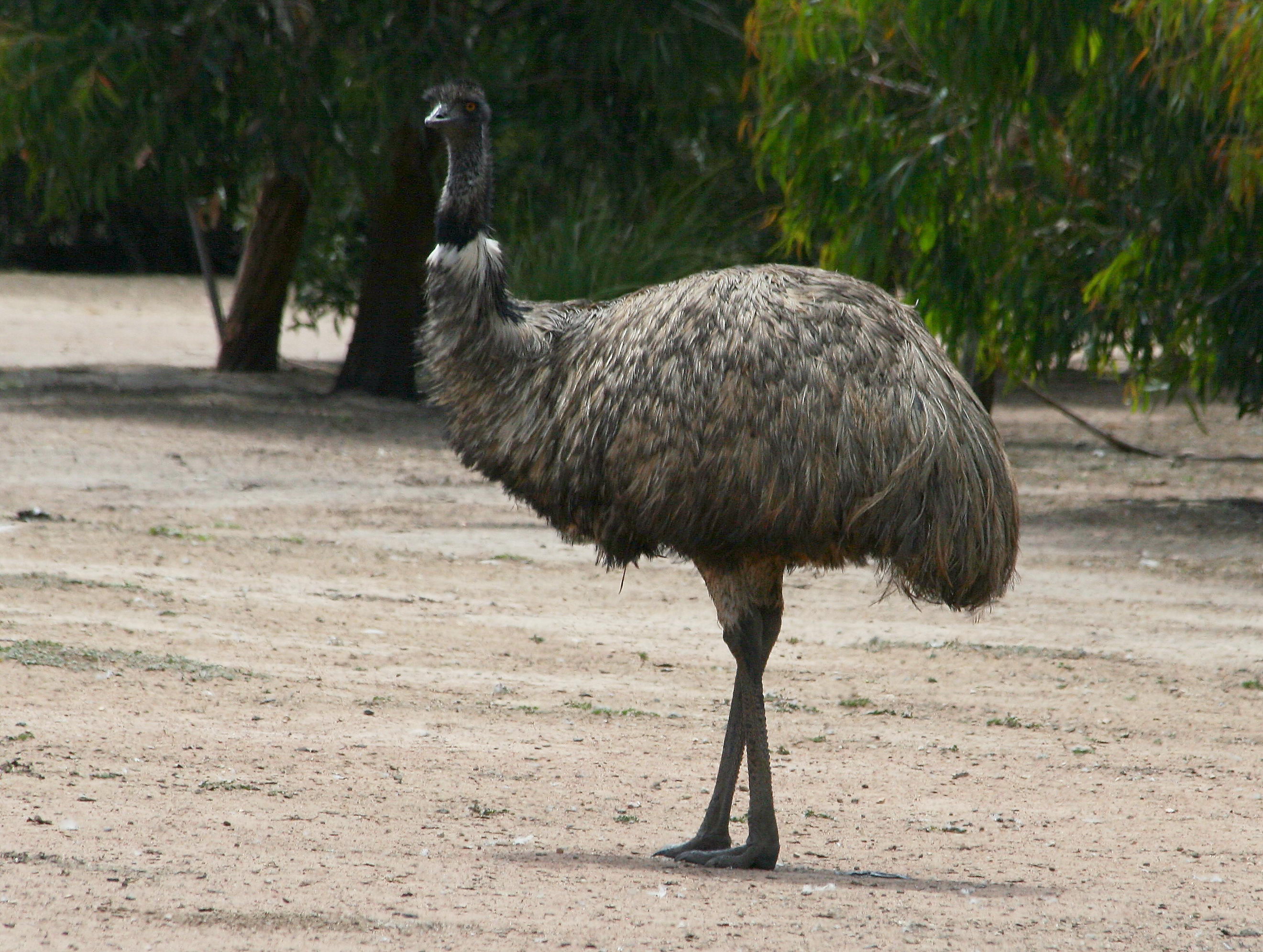This is the second part of "Top 10 birds you should see in Australia". If you have not read part 1, I suggest that you read it first, if you have time. However, it is not necessary.
These are my personal top 5 birds that I have seen on road trips through Australia, and around my home. I will include some information about personal experiences I have had around these birds, and also information about identification and birdwatching for those who are interested, as in the previous list.
Hopefully I have explained this list briefly enough. It is now time to start.
5: Pied Cormorant
Phalacrocorax varius
 |
| A pied cormorant swimming in the Brisbane river |
Pied cormorants are only one of the many common cormorant species in Australia, but they are the most commonly seen ones on the east coast. They are seen swimming in rivers, lakes, or estuaries, and they dive underwater to catch fish. They mostly live close to the coast, and not inland.
When I lived in the Central Coast, close to Sydney, I saw this bird, or possibly some other type of cormorant, on the rocks near the beach almost every time I went there. After it went swimming somewhere else to catch food, it always rested on the same rock to dry off its wings. I have also seen them in Brisbane, swimming in the ocean, reservoirs or the Brisbane river. It is very interesting to watch them feed, as they swim on the surface of the water for a while, then, when they see food underwater, they quickly and gracefully dive down to catch it. Cormorants spend about 20 seconds underwater, on average, before they resurface, and with clear water and direct sunlight, you might be able to track them as they swim.
Description: The pied cormorant is black and white("Pied" means black and white, and this leads to many bird names, such as pied butcherbird, pied currawong, magpie, etc), with black wings, black back, a white neck and white on most of the underside. It can be identified by an orange-yellow patch right in front of the eye. It has a blue-green eye ring.
How to find: Their feathers are not completely waterproof, so pied cormorants are usually seen drying out their wings in the sun, standing on top of rocks. They can also be seen swimming in the water looking for food. The best place to see cormorants is around bodies of water. They are always close to land, because they only fish in shallow water.
Diet: Pied cormorants mainly eat fish. When they dive, they swim with their webbed feet and steer using their wings, which gives them speed and agility underwater.
4: Black Swan
Cygnus atratus
The black swan is mostly known for its cultural importance, and it is seen as an icon of Australia because of the way they oppose to European swans, being black instead of white and living in the opposite hemisphere. Being part of Australian culture, they can be seen on the flag of Western Australia(Down and right) and the coat of arms(See previous article, "Emu", it is on the bottom middle of the shield).
Black swans live in the south of Australia, and I have seen many of them in Canberra and on the island of Tasmania. They swim in the water most of the time, and I have not seen one walking on land very often. They are not afraid to nest, and even live, near humans, and they are not very shy.
 |
| Western Australian flag |
I have seen black swans often on the open waters of Tasmania. When it is not mating season, they move around from place to place, flying frequently and stopping at water to feed. They partner for life, raising one brood per season. Their young are called cygnets.
Description: The black swan, hence its name, is mostly black, but it has white wing-tips that are visible in flight. Its bill is dark red, but also has a white tip.
How to find: Black swans are commonly seen in open, clean, still bodies of water. In southern places, such as Tasmania, they are a more common sight and many of them live in southern cities such as Canberra, Melbourne, Adelaide and Hobart. When you are lucky you might see them as a family.
Diet: Black swans feed by stretching down with their long necks and eating algae and other aquatic plants from the bottom. They do this in water about 1m deep.
3: Wedge-tailed Eagle
Aquila audax
 |
| Perching |
The Wedge-tailed eagle is the largest bird of prey in Australia, with a wingspan of up to 2.84 meters and a length of up to 1.06 meters. They are accustomed to deserts and mainly live in desert environments, such as the outback, but not in the harshest deserts, and mostly near the edge of the outback. They can, however, occasionally be seen nearer to the coast.
You would be lucky to see one of these birds in the wild. They often circle very high up for hours on end, at about 1,800 meters up, and sometimes much higher. They do this by gliding on thermal air currents, during the hottest part of the day when there can be scorching heat. It can be very hard to see them during these times(Imagine trying to see a 1cm wide object 20m away. It is just about as hard), but most of the times that I saw one in the wild, it was circling straight overhead. Fortunately, they are very distinguishable when flying, even by the silhouette, because of their unique wedge-shaped tail.
.jpg) |
| In flight |
Wedge-tailed eagles are very territorial birds, and they have a record of attacking other birds, including other wedge-tails, and on occasion attacking and damaging model airplanes, hang gliders, paragliders, survey drones, normal airplanes and helicopters. For food they hunt anything that is convenient, being very adaptive, and they sometimes eat roadkill or other carrion. Once I have seen a wedge-tailed eagle, or a similar species, fly after a dingo that was dragging a dead wallaby across the road. Besides dingoes they compete with other scavengers such as Australian ravens and black kites. When not looking for food or flying, these eagles perch on a rock high up where they can get a good view of their territory.
Description: Wedge-tailed eagles are brown, and the colour of the feathers is a marker for age, since they get darker as they get older. To identify them from other birds, look for the wedge-shaped tail. They are very large birds, 96cm in length on average, which is about as tall as a 3 year old child.
How to find: They can be seen circling in slow loops high in the air in the middle of the day, around noon. Because they use thermals to stay up, they hardly ever have to flap their wings during this kind of flight.
Diet: Basically, being apex predators, wedge-tailed eagles can hunt almost anything. In many places, they eat mainly rabbits, ever since European settlers arrived. They also eat small mammals such as wallabies and possums, and many types of smaller birds including cockatoos, and also reptiles. I have seen them go after carrion such as roadkill, and they scavenge from other predators as well. In groups, they may even hunt large prey like sheep and red kangaroos.
2: Superb Lyrebird
Menura novaehollandiae
The superb lyrebird is well known as a songbird, and it is named after the male's tail feathers, two of which form the shape of a lyre. It has strong legs and large feet for clawing in the dirt to find food, like the bush turkey, but the superb lyrebird also has other uses for its feet. These lyrebirds are endemic to Australia, and they live on the east coast from Tasmania all of the way up to South East Queensland. A lyrebird appears on the Australian ten-cent coin.
The thing that lyrebirds are most known for is their courtship ritual. During mating season, the male lyrebird prepares for courtship by finding an area under some tall bushes that is safe from predators, but still easily visible from a distance. The male then uses his feet to rake all of the sticks and overlaying leaf litter from a small patch of ground, about 2m wide. As a "courtship dance", the lyrebird arches its long tail feathers over its head, covering it in a light silver canopy, and stands in the middle of the area it raked out, singing its song loudly enough that it can be heard from far away.
 |
| Australian ten-cent coin |
The song of a male lyrebird is composed of mimicry of many other sounds, both natural and artificial. It can mimic the sound of up to 20 other birds that live in the same area, and also the sound of a chainsaw, a car alarm, and many others. I have heard more lyrebirds than I have seen, and and first I have mistaken them for other birds, because of their excellent mimicry. I have heard one make the chainsaw sound, the voice of a bell bird, part of the song of a whip bird and an attempt of the call of a kookaburra, all in about 5 minutes, and most of them were imitated almost perfectly. I have also watched one perform its mating dance, and it tended its ground area well, pausing its song to get some dirt or branches out of the way every two minutes or so.
Description: The superb lyrebird is a large brown bird. It is similar in form to the bush turkey, and looks like a large pheasant. The males have a long tail, which consists of a few silvery-white feathers that the bird fans out during display, and two special curving feathers that look like the sides of a lyre. Juveniles and females also have a long tail, but lack the special feathers, and the tail is not as long or ornate.
How to find: It is easiest to find lyrebirds while on bushwalks in dry eucalypt forests about 100km north of Sydney, where they are common. It is easier to hear them than to see them, so listen carefully to find them.
Diet: Same as the
Australian brushturkey.
1: Southern Cassowary
Casuarius casuarius
 |
| Wild cassowary at Mission Beach |
The southern cassowary is a large, flightless bird, similar to the emu, except that its feathers are black and it has a large crest on the top its head. Its head and neck are distinctly coloured, and it has wattles on its neck. The Southern cassowary lives in southern New Guinea, and some very few places along the northeastern coast of Queensland, in the dense tropical rain forest.
While on a vacation in the tropical north of Queensland, we went to
Mission Beach, a small town surrounded by green rainforest-covered
hills. While we were there, we went to a building where we met a
photographer who took pictures of cassowaries, and he told us about a
good place to see them. We went there in the early morning with
binoculars, and we were lucky enough to see a cassowary walking about
150 meters away through the early morning mist.
 |
This is the symbol for the Cassowary Coast
shire region. It represents two things at once. |
Cassowaries can be extremely dangerous birds. Being related to emus and ostriches, they can run far faster than a human, and if they feel threatened, they can deliver a kick fatal to humans. If you come close to a cassowary, you should not approach it or run away. The best thing to do is to slowly back away and keep an eye on it until it walks away.
Many cassowaries get killed off by human activity. Its greatest dangers are deforestation, hunting, roadkill and other animals eating their eggs. As of 2002, there was a declining population of an estimated 10,000-20,000 birds in the world, with approximately 1,500-2,500 birds in Australia. This puts it on the Threatened list with a conservation status of Vulnerable. The Australian population has a status of Endangered. If it goes extinct, it will be very bad for the rainforest, because the southern cassowary can eat fruits of plants that are poisonous to other animals, and the bird is important for distributing the seeds of these plants.
Conservation status: Vulnerable(Endangered in Australia). This is Least Concern for all other birds on this list, but you will still be able to find it if you look in the right places.
Description: The southern cassowary looks like an emu in body shape and size, but the feathers on its back are black instead of brown, as well as some other differences around the head and neck. These differences include that its neck and head are a sharp blue colour, paler at the head, and it has two wattles, which are red by contrast. The back of the neck is also red. It has a huge crest on top of its head. In my experience, it looks a bit like a very large turkey.
How to find: In Australia, you can find them by taking a trip through the rainforest in the north, along the coast(watch out for the crocodiles). To find places where they live, you can look up information or ask people. Cassowaries are active mostly in the early morning. Slow down on the road in areas where cassowaries have been seen to avoid hitting them.
Diet: Fruit, fungi and some insects.
Thank you for reading this list! Unfortunately, I might be busy for the next few weeks, and I might not be able to write very much. If you have any questions/comments, please post them below(Thanks!).
Image sources: Wikimedia commons(except for the first one, which I took myself).




.jpg)












